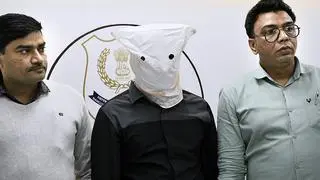The death and devastation in Uttarakhand could have been less severe, had the region, visited by large number of tourists and pilgrims each year, practised responsible tourism.
That, obviously, is wishful thinking in retrospect. But, responsible tourism (RT), which gels well with the environment, holds great promise for shrinking the scope and scale of natural calamities, particularly in the Himalayan region.
“Environmental responsibility is the first of the three core principles of RT,” says Suman Billa, Kerala Government’s Principal Secretary, Tourism. The other two are economic responsibility and social responsibility. “RT makes environmental protection the responsibility of all tourism stakeholders, including the local people.” Such an approach can check environmental degradation substantially.
Kerala is the pioneer of responsible tourism in India. The backwater heartland of Kumarakom in Kottayam district has emerged as a model, both nationally and globally. It is one of the two RT models being monitored by the World Tourism Organisation to see if it could be replicated elsewhere — the other is Gambia in western Africa.
Back in 2008, Kerala Tourism launched four RT projects at Kumarakom, Kovalam, Thekkady and Wayanad. Kumarakom turned out to be the most successful. “It is a win-win for all — the tourists, the local people, the Government and the tourism industry,” Billa said.
Efforts
As part of the RT environmental initiative, the project declared the Kumarakom bird sanctuary a plastic-free zone, checked backwater pollution with the help of the local community, took steps for mangrove protection and promoted organic farming. Billa pointed out that the Tourism Department, as part of the economic responsibility, developed several micro enterprises, handicraft units, organic vegetable farms, fish and lotus ponds. Linkages to the hospitality industry were created which increased demand for local products and services. Local art and cultural troupes were promoted. These, while enhancing the local community’s revenues, added to the tourism experience. Community-based tourism products such as ‘A day with farmers’ and the ‘village experience’ gave the tourist opportunities to experience local culture, cuisine and way of living.
The people of Kumarakom, as part of the social responsibility, were made aware of the negative fallout of tourism, such as child labour, prostitution, drug addiction and alcoholism. The RT raised the local community’s self esteem as well as social esteem, apart from raising their income. Their skills, art form and musical talents have been put to use — the tourists come to their homes and village squares to enjoy them.
Five years after RT was introduced, it is now stock-taking time at Kumarakom. At an international conference on RT, to be held on June 27-29, nearly 150 people in the industry will check out what the Kumarakom model is. Union Tourism Minister Chiranjeevi will open the thee-day conference.






Comments
Comments have to be in English, and in full sentences. They cannot be abusive or personal. Please abide by our community guidelines for posting your comments.
We have migrated to a new commenting platform. If you are already a registered user of TheHindu Businessline and logged in, you may continue to engage with our articles. If you do not have an account please register and login to post comments. Users can access their older comments by logging into their accounts on Vuukle.